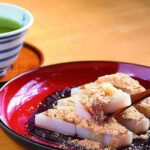
Credit: 柏翰 / ポーハン / POHAN via Flickr
As I’m sure most people who are reading this are aware, Tokyo is the current capital of Japan. That being said, it wasn’t always the capital. Some of you will say “Of course not, Kyoto was also the capital before Tokyo” and you would be right, but did you know of the other capitals? The Japanese capital has never really been a strongly designated place like a lot of countries until the last millennium.
In the past, the capital was designated by where the Emperor or Empress had taken residence. After the Second World War, it changed so that it was where the government building (Diet of Japan Building) was; and that’s currently Tokyo.
So, let’s go through a few major or interesting ones!
Kashihara (Fujiwara-kyo/Aramashi-kyo: 694-710)
Fujiwara-kyo was the capital of Japan for 16 years during the Asuka Period. This was one of the only capitals to last more than 10 years during that period and was also the last before the Nara period.
During the this period, there were numerous palaces and capitals, all within a few years of each other. It was almost like they couldn’t decide where to settle.
Although this palace has been destroyed, the ruins can still be viewed; that is, the site where it once stood.
Nara (Heijo-kyo: 710-740; 745-784)
Nara is well known for its historical and natural beauty. Heijo-kyo was also the capital for a large portion of the Nara period (710-794).
Heijo-kyo was established by Empress Gemmei and has a break from being the capital for 5 years when it was moved to Kuni-kyo (present day Kizugawa, Kyoto Prefecture) for 4 of those years, Shigaraki-no-miya (present day Kouka, Shiga Prefecture) and the Naniwa-kyo (present day Osaka, Osaka Prefecture) during the last year.
The capital was moved to Nagaoka-kyo (present day Kyoto Prefecture) for 10 years until it was moved to Heiyan-kyo in 794.
The ruins of Heijo-kyo (Heijo-kyu-seki) are now a UNESCO World Heritage Site and can be visited.
Kyoto (Heian-kyo: 794-1868)
Kyoto was the Capital for a very long time until the Meiji period when they decided to move the capital to Edo (now known as Tokyo).
Kyoto has been the capital on more than one occasion, however that would be by today’s boundaries.
The Heian Palace was not the only capital within this time frame, however the other palace, Fukuhara-kyo; Hyogo Prefecture, was capital for less than a year (1180).
Kyoto was often crippled because of various warring states throughout this time frame and, although this city is now stunningly beautiful, it has been razed more than once in the past.
Although the original palace has long been destroyed, a recreation has been built in Kyoto on a different site. A monument can be found on the site of the original palace.
Kansai Additional Notes
As these were all in the Kansai region, it could be considered the heart of Japan. There’s a lot of history to be seen within the Kansai region and it’s worth checking out if you love traditional Japanese architecture and history.
Alongside the few I mentioned, several others could have easily been noted. A lot of palaces were most certainly around Nara and its surrounding area.
There were a few that were outside of the region though! Here’s a couple of them that are far from the Kansai area
Asakura, Fukuoka (Asakura no Tachibana no Hironiwa no Miya: 661)
Asakura was only capital for 2 months and was moved back to the Kansai region. I wonder what it would have been like if the capital had stayed in Kyushu. Would it have changed history? I guess we’ll never find out!
Tokyo (1868 – Present)
As you are probably aware, Tokyo is the current capital of Japan, After the Edo period, the Meiji Emperor moved the capital to Edo and it was renamed Tokyo or “East Capital”. The capital was the first one to be in the eastern Kanto region. During the Edo period, the city thrived under the Tokugawa Shogunate and became a bustling city. If you know the geography of the Kanto region, you’ll know that the area is considerably flat compared to the Kansai region. For this reason, it was able to spread quickly with less effort. The Edo period water system was also very modern for its time (See Waterworks Museum article) and was ideal for the growth of Edo for a substantial amount of time.
The Imperial Palace in Tokyo can be visited by people, but the inner gardens are not open to the public; with exception of two days – the New Year’s greeting and the Emperor’s birthday.
In your country, has there ever been another capital other than the one that’s currently used? I know that in my country, England, there have been a couple of places, so it’d be interesting to find out a little about other countries, too!
If I visit the Nara area, I’ll be sure to take some pictures for everyone. See you in the next article!







